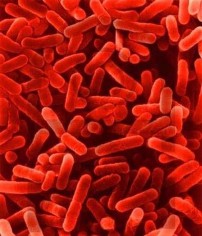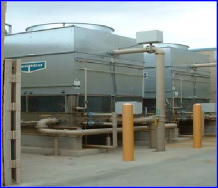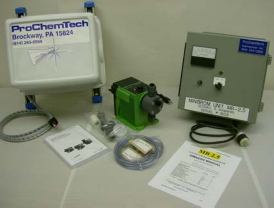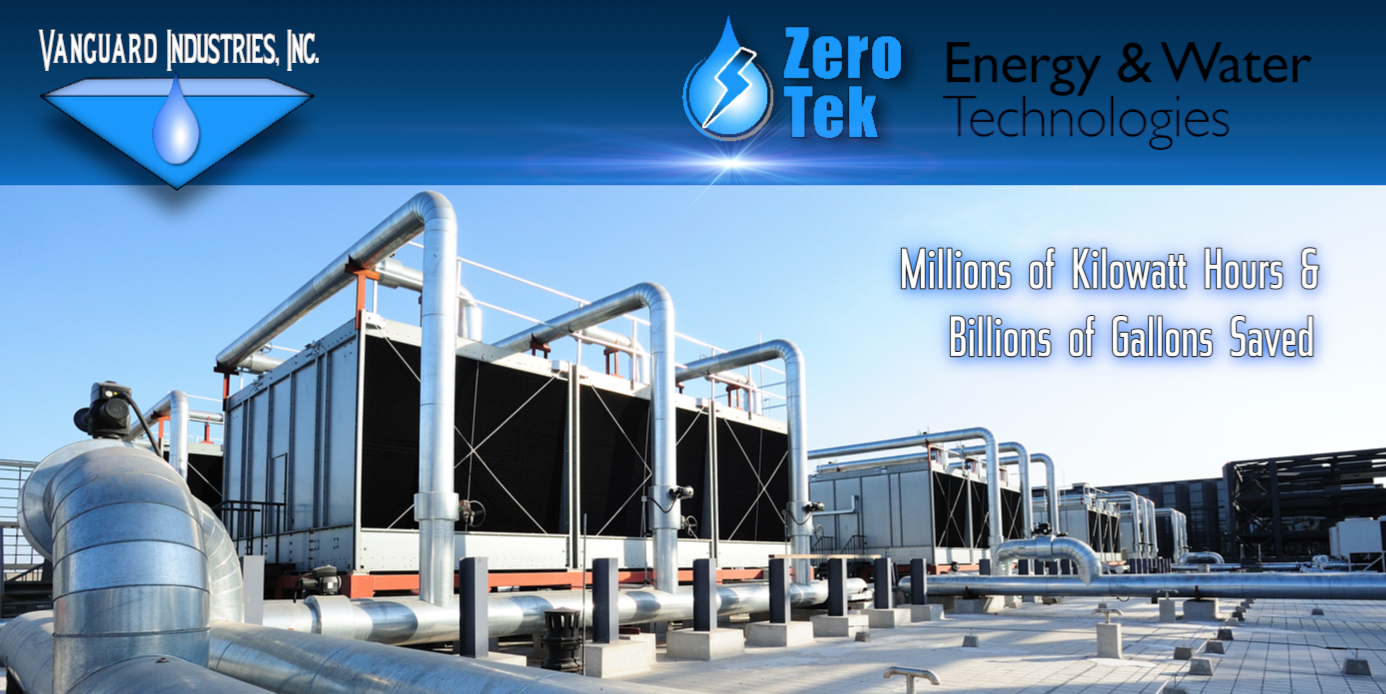Legionnaires’ Disease
Control Technology for Cooling Towers
ASHRAE Standard 188P
Background

legionella bacteria
Legionnaires’ Disease (Legionellosis) was recognized as a specific bacterial disease, caused by legionella pneumophila, after it killed 34 members of the American Legion who contracted an acute pneumonia infection while attending the 1976 Legion convention in Philadelphia. Spread of the disease is generally linked to water systems, with cooling towers being a prominent source. For instance, in July, 1995, three deaths and thirteen confirmed cases were linked to the cooling tower system at the Chambersburg, PA, hospital. Industry is not immune, as shown in March, 2001, where four employees at the Ford Motor Company, Cleveland, OH, casting plant contracted Legionellosis, resulting in two deaths. Recent estimates by the Centers for Disease Control (CDC) and the Occupational Health and Safety Administration (OSHA) show annual infection rates between 10,000 and 25,000+ in the United Sates alone. Legionellosis is a deadly menace in any commercial or industrial facility equipped with a cooling tower system. Recent data shows that the mortality rate for the disease is typically 5 to 15%, with rates as high as 30% when less resistant populations are exposed!
The Legionellosis bacterium, Legionella pneumophila (Legionella), is really quite common, being found in most soils throughout the world. It becomes a public health and safety problem when it reproduces in large numbers in a suitable water environment and is subsequently dispersed into the air. A respiratory infection results when a sufficient number of the airborne bacteria are inhaled. Cooling towers are a preferred site for growth of the bacteria, often providing favorable conditions for reproduction and subsequent dispersal via the aerosols produced during cooling tower operation. Other water systems, such as building hot water supplies, chilled water systems, potable water supplies, spas, decorative fountains,, evaporative air coolers, air washers, and industrial quench systems; have also been found to harbor sufficient bacteria to cause infection should the water be dispersed into the air.
Once the specific problem presented by Legionellosis was recognized as relates to cooling tower system operations, health related organizations worldwide such as CDC, OSHA, and US Veterans Administration (USVA); and industrial associations involved with cooling tower systems such as the American Society of Heating, Refrigerating, and Air Conditioning Engineers (ASHRAE), Cooling Technology Institute (CTI) and Association of Water Technologies (AWT); instituted on-going research programs to devise monitoring and control methods.
Problem
As could be expected from the number, and differing primary missions, of the various groups involved, a large number of often confusing, and sometimes conflicting, opinions and recommendations have resulted concerning control and monitoring of legionella in cooling tower systems.
For instance, the main recommendation, to date, by the CDC for control of legionella in cooling tower systems is summed up as “control total biological activity in water systems via routine use of USEPA approved biocides and keep the systems clean”. Concern is also expressed about the “high cost of an environmental investigation and of instituting control measures”. Routine monitoring is not recommended since “the relationship between the results of water cultures and the risk of legionellosis remains undefined”.
In their standard EC 1.7, effective January 1, 2001, the Joint Commission for the Accreditation of Healthcare Organizations (JCAHO) requires that all accredited facilities have a management program to “reduce the potential for organizational-acquired illness” and “managing pathogenic biological agents in cooling towers –“. While the accredited facility is required to control legionella in their cooling towers, little guidance is provided on the actual how-to and what is considered acceptable “managing”.
In comparison to the rather vague CDC and JCAHO recommendations, both OSHA and CTI have concluded that the best control practice for legionella in cooling towers is to “feed a source of halogen (chlorine or bromine) continuously and maintain a free residual”. CTI recommends a free residual of 0.5 to 1.0 mg/l, while OSHA recommends a minimum free residual of 1 mg/l.
Neither organization recommends routine monitoring for legionella due to cited problems such as:
-
An infectious dose level for legionella has not been established
-
Legionella can rapidly colonize a previously “clean” system
-
Simple detection of legionella in a cooling tower system does not mean there is a risk of disease.
-
Culture based test methods for legionella have a 10 to 14 day turn around time, too long for the testing to be used as an effective control parameter.
OSHA does, however, provide guidelines relating legionella test results in cooling tower water to recommended actions as follows:
| legionella level | recommended action |
| 100 + cfu/ml | prompt cleaning and/or biocide treatment of system |
| 1000 + cfu/ml | immediate cleaning and/or biocide treatment, take prompt steps to prevent employee exposure |
A new ASHRAE Standard 188P, “Prevention of Legionellosis Associated with Building Water Systems”, will issue in 2012. While this is not a regulatory standard, it will become an ANSI Standard and thus will be incorporated into model building codes and eventually into all state building codes and practices. ASHRAE has elected to use Hazard Analysis and Critical Control Point (HACCP) plan methodology as the recommended systematic disease prevention strategy for Legionellosis. The 188P Standard is designed to (a) alert operators to which facilities will require HACCP plans, (b) provide specifications for developing a HACCP plan, and c) provide information to facility managers on how to comply with the standard and any resulting HACCP plan.
ASHRAE Standard 188P has the following basic components.
-
The facility must first be surveyed to determine its risk based upon facility characteristics and water systems.
-
The facility owner shall identify the entity responsible for the building survey.
-
Risk factors associated with Legionellosis are to be identified, typical factors are:
-
multiple rooms supplied by a centralized hot water heater
-
more than 10 stories, including below grade levels
-
healthcare facility
-
occupants include immunocompromised individuals
-
it has whirlpools and/or spas in the facility or on the premises
-
it has aerosol generating water features or devices such as fountains, evaporative coolers, misters, and/or air washers in the facility or on the premises
-
the total halogen concentration of the incoming water supply is less than 0.5 mg/l as Cl2
-
-
The facility shall be surveyed to determine if it has cooling towers and/or evaporative condensers installed for operation of HVAC systems.
-
After the survey is completed, preventative measures for the facility shall be determined from a provided Table. A survey must be conducted on an annual basis.
-
If a facility is determined by survey to have a risk of Legionellosis, a HACCP risk management plan shall be used for risk reduction.

This ASHRAE standard has very specific HACCP guidelines for controlling risk from cooling towers and evaporative condensers, which reviewed in the following section of this bulletin.
Other regulatory agencies have taken even more definite positions; many European and Australian public health agencies require that all cooling towers be operated with continuous halogenation, specific monitoring and reporting guidelines are in place to enforce the requirement.
Some American agencies, such as the Allegheny County (PA) Health Department, now recommend that institutions, such as health care facilities, undertake routine legionella testing.
All operators of cooling towers have both an ethical and a legal obligation to prevent transmission of disease to their employees, customers, patients, and the general public. The legal liability associated with operating a cooling tower without the best technology for control and monitoring of legionella is very substantial. In the past ten years, many large firms have been forced into bankruptcy by civil suits based on such health and safety issues.
Problem Solved
The historic problem for operators of cooling towers of determining the best technology for control and monitoring of Legionella, and implementing it in a cost effective, documented manner, has now been solved by ASHRAE with their Standard 188P.
ASHRAE Standard 188P
For the majority of commercial and industrial facilities, those sections of Standard 188P that address risk reduction from operation of cooling towers and evaporative condensers will be the major concern. The following is a brief outline of the Standard’s requirements for existing facilities, new facility construction has some additional requirements.
System Maintenance
The HACCP plan will includes a written maintenance plan that:
-
specifies routine inspections for system cleanliness, drift eliminator condition, condition of fill, and water distribution operation.
-
includes basin or sump cleaning and purging of stagnant or low flow zones.
-
identifies responsible parties and a mechanism for recording maintenance activities and inspection notes.
Water Treatment
The HACCP plan shall include a written water treatment plan for control of biofouling, scale, and corrosion. The water treatment plan shall:
-
specify all equipment and chemical used for the purpose of treating the system’s open recirculating loop.
-
include evaluation for control of solids. Contaminants in a cooling tower system, both suspended and precipitated solids, facilitate growth of bacteria and biofilms that can impact the potential for Legionella.
-
require that control of solids in cooling tower water and in basins be accomplished through filtration, physical cleaning, or other means such as chemical water treatment.
-
identify the parties responsible for providing and maintaining the water system treatment.
-
include an inspection and maintenance schedule for the water treatment equipment and a schedule for any testing required as part of the water treatment plan.
Shutdown and Startup
The HACCP plan shall meet the following requirements regarding startup and shutdown procedures. It shall:
-
include a written shutdown procedure that includes any chemical pretreatment steps or pump cycling protocols, as well as provision for system drainage or shutdown periods or longer duration, as specified in the plan.
-
include a written procedure for startup from a drained system.
-
includes a written procedure for startup from an undrained (stagnant) system that exceeds the number of idle days specified in the plan.
Each of these shutdown and startup procedures shall identify the parties responsible for initiating and executing the procedure.
Disinfection of Cooling Towers and Evaporative Condensers
The HACCP plan shall includes the following two disinfection procedures:
-
a written procedure for remedial on-line disinfection which includes the conditions that would prompt its application and identifies the parties responsible for initiating and executing the procedure.
-
a written procedure for emergency disinfection which includes the conditions that would prompt its application and identifies the parties responsible for initiating and executing the procedure.
Field Experience/Product Development
ProChemTech International is a designer/supplier of cooling tower systems and water management programs for operating systems; and operates cooling towers at its own manufacturing plants. We have reviewed the many recommendations, guidelines, and position statements; and conducted a four year legionella monitoring program, analytical work by the Special Pathogens Laboratory of the USVA covering over 150 ProChemTech managed cooling systems. (Note that the cost of a single legionella analysis by this world class laboratory is less than $150, is this “high cost”?)
We have found that legionella monitoring is a valuable tool for adjustment of cooling water management programs to minimize the level of legionella present in cooling water when combined with routine biological testing of recirculated cooling waters, using control points of 10,000 colonies per ml maximum, measured using plate counts; or 2000 RLU maximum, measured using the ATP method. Legionella testing on a twice a year basis was effectively used as a means of assessing the effectiveness of the water management program in keeping this specific bacteria under control.
Using the OSHA action levels as the control points for Legionella in our water management programs, Legionella testing was used to both initiate and verify effectiveness of the actions taken. Due to action level work on several systems, we have documented the effectiveness of halogen biocides against Legionella.
These findings support the on-going research in the United Kingdom, and by Dr. Janet Stout, Special Pathogens laboratory, that has demonstrated that oxidizing biocides, such as chlorine, bromine, chlorine dioxide, and ozone; were more effective at controlling Legionella than non-oxidizing biocides; such as glutaraldehyde, quaternary amines, and isothiazolin. We can thus conclude that any effective water treatment program must incorporate routine use of an oxidizing biocide for control of Legionella.

Our company has developed a unique, patented, process for cost effective halogenation of cooling towers, electrolytic bromine generation. Electrolytic bromine generators consist of a power control panel and electrochemical cell that convert either a concentrated non-hazardous mixed salt water solution into bromine, or convert bromide ions in the cooling water into bromine via a side stream electrochemical cell. Units are sized from the “MiniBrom” capable of 1.0 pound per day of bromine
production and suitable for many smaller HVAC applications, to large “ElectroBrom” and “SSBrom” (side stream) units, producing up to 60 lb/day and usable in the largest power plant cooling tower. Note that these units are produced in a USEPA registered facility.

In addition to electrolytic bromine generators, our firm has developed and manufactures a USEPA registered liquid “stabilized bromine” (PCT 3026), which is an economical halogen biocide. For those installations that do not wish to install any additional equipment, use of stabilized bromine is a simple, economical means to add a halogen oxidizing biocide to a water management program using just a timer and chemical pump.
Legionella Control
At present, the best technology for control of Legionella has been defined by ASHRAE in Standard 188P. Our specific work has shown
the following to be of direct application.
-
Provide routine halogenation to maintain a total residual of 0.5 to 1.5 mg/l in the cooling water for a period of one (1) hour after the dose.
-
Maintain routine biological control of the cooling water by keeping standard plate counts below 10,000 cfu/ml, and/or ATP test results below 2000 RLU. Swab testing for sessile biofilm monitoring and control is highly recommended.
Our commercialization of both stabilized bromine and electrolytic bromine units makes routine halogenation the safest, most cost effective means to control legionella available. Use of either of these technologies eliminates the remaining technical and financial reasons against halogenation technology for control of Legionella in cooling towers.
HACCP Services
Implementation of a complete ASHRAE Standard 188P HACCP program can be a significant task for many facilities. ProChemTech can provide assistance on a consulting basis for preparation and implementation of a HACCP program ranging from a complete total facility program to development and implementation of just the cooling tower and evaporative condenser sections.
Prepared by: Timothy Keister, CWT, FAIC, ASHRAE Member Chief Chemist
ProChemTech International, Inc.
“Innovation in Water Management”
Apache Junction, AZ, and Brockway, PA
814-265-0959 www.prochemtech.com
ElectroBrom – US patent 7,927,470
Internet Technical Resources
www.ashrae – position and guideline papers
www.awt.org – excellent summary update and statement
www.cdc.gov – lots of clinical data and issues discussion
www.cti.org – excellent guideline for best practices
www.specialpathogenslab.com – commercial testing service
www.legionella.org – the site for all recent research, testing services
www.osha.gov – guidelines for operation and action, investigation outline
www.legionella.com – commercial testing service
www.hcinfo.com – mix of free publications and commercial consulting services
